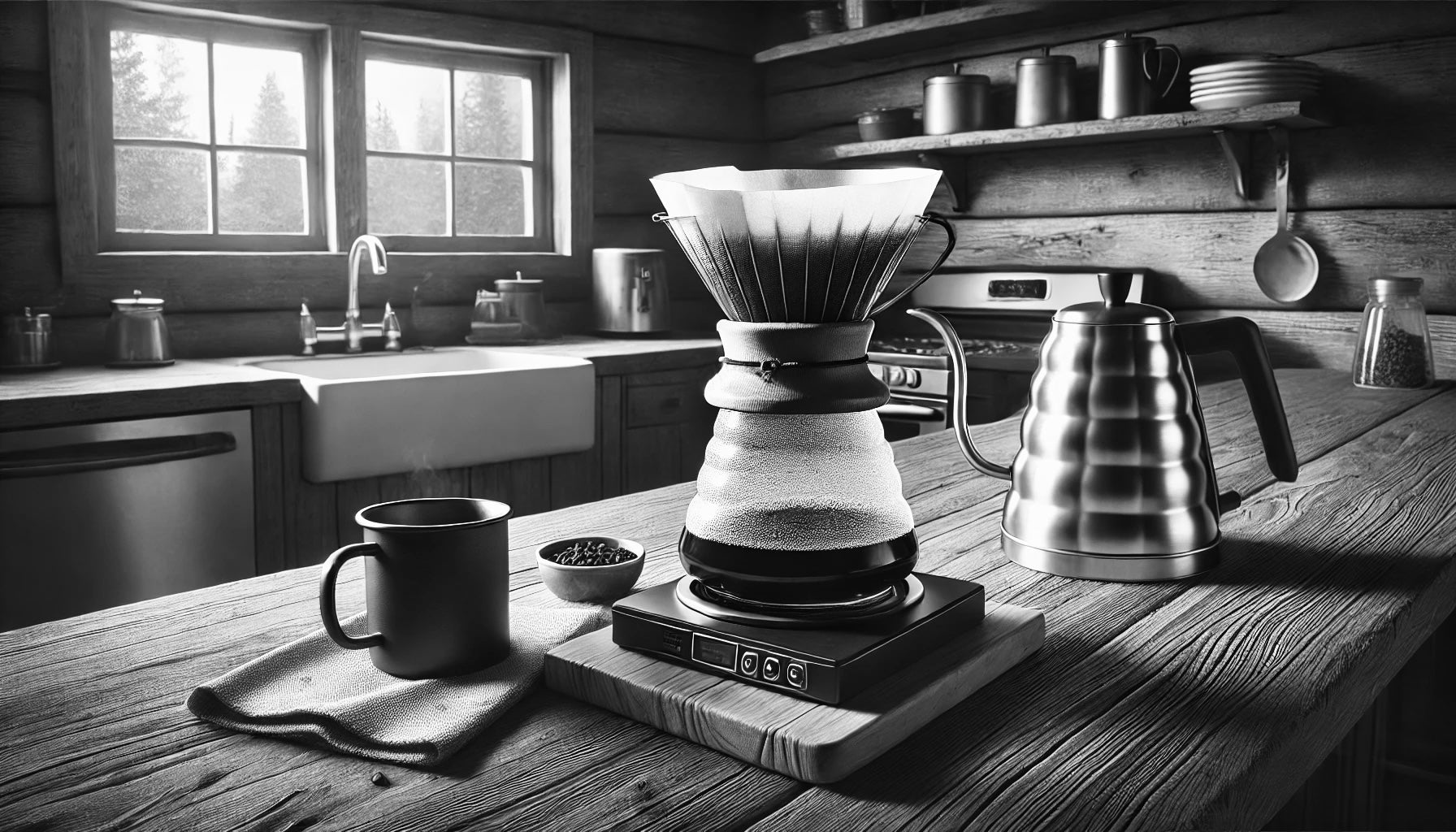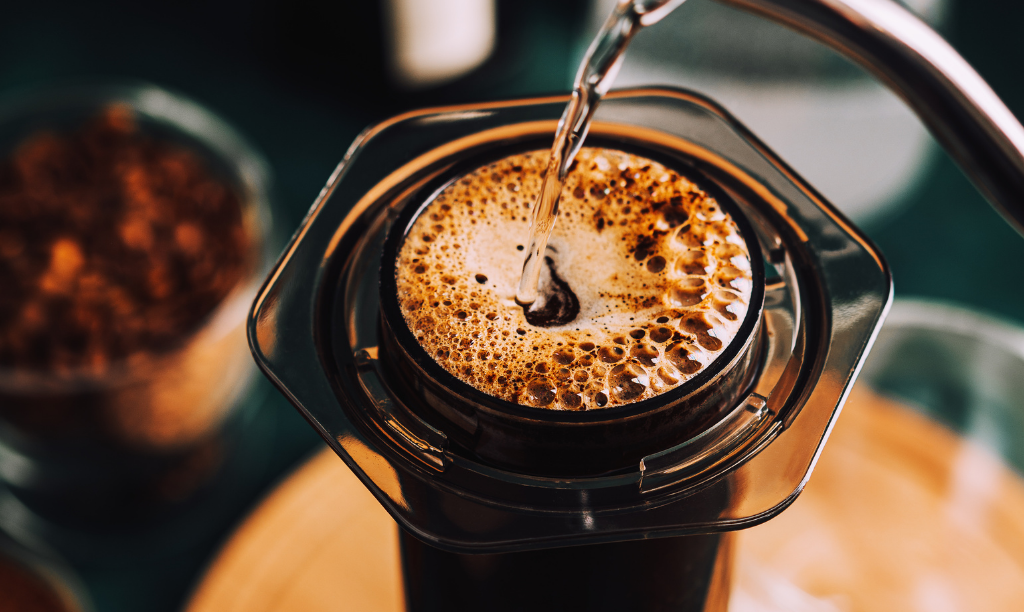Coffee Brewing Methods: Unlocking the Secrets to the Perfect Cup in the house
Wiki Article
The Scientific Research Behind Coffee Developing: How Temperature and Time Affect Your Beverage
Understanding the science behind coffee brewing discloses that temperature level and time are not plain variables yet critical elements that determine the drink's flavor account and general high quality. The optimum developing temperature commonly falls between 195 ° F and 205 ° F, while the duration of extraction varies considerably throughout different techniques. This interaction of aspects can lead to a cup that is either disappointing or delightful. As we discover the nuances of these components, the question arises: exactly how can one efficiently equilibrium temperature level and time to accomplish that excellent mixture?The Chemistry of Coffee Removal
The chemistry of coffee removal looks into the elaborate procedures that transform raw coffee beans into the aromatic beverage appreciated worldwide. This transformation mostly entails the solubility of different compounds present in the beans, which are affected by factors such as work size, water high quality, and the brewing technique employed.Throughout the developing procedure, warm water functions as a solvent, extracting soluble compounds, consisting of high levels of caffeine, lipids, acids, and sugars, from the coffee grounds. Each compound adds to the flavor account, aroma, and body of the final drink. Acids are liable for brilliant and appetizing notes, while oils contribute to a rich mouthfeel.
The initial phases of developing extract acids and sugars, leading to a positive level of acidity, while extended extraction can lead to anger due to over-extraction of unwanted compounds. Comprehending these chemical interactions is crucial for maximizing developing techniques, as the equilibrium in between extraction time and water temperature can considerably affect the overall high quality of the coffee.
Suitable Developing Temperatures
Locating the ideal developing temperature is crucial for opening the full potential of coffee flavors and fragrances - coffee brewing methods. Research study suggests that the ideal variety for brewing coffee exists between 195 ° F to 205 ° F(90 ° C to 96 ° C) Within this range, the extraction process effectively dissolves the desirable soluble substances in coffee beans, leading to a savory and well balanced mugBrewing at lower temperatures, such as below 195 ° F(90 ° C ), may cause under-extraction, yielding a weak and acidic mixture with soft tastes. Alternatively, brewing at temperatures exceeding 205 ° F(96 ° C) can lead to over-extraction, producing a extreme and bitter taste as a result of the extreme dissolution of undesirable substances, such as tannins.
In addition, the optimal brewing temperature can vary depending on the coffee bean kind and roast level. Lighter roasts typically benefit from somewhat greater temperatures to enhance their intricate flavor accounts, while darker roasts may be much better fit to lower temperatures to alleviate bitterness.
Eventually, keeping accuracy in developing temperature levels is vital for achieving a harmonious equilibrium of tastes, guaranteeing that every cup of coffee provides a satisfying sensory experience.
Impact of Developing Time
Developing time plays an essential duty in figuring out the taste account and general top quality of coffee. The removal process, which affects the taste, scent, and body of the drink, is greatly reliant on how much time the coffee premises touch with water. Shorter brewing times can lead to under-extraction, bring about a weak or sour view publisher site taste, as insufficient soluble compounds are liquified. Conversely, prolonged developing can lead to over-extraction, where undesirable compounds are released, causing a bitter or astringent preference.Optimal developing time varies relying on the method utilized and the work dimension of the coffee. For circumstances, a French press generally calls for concerning 4 mins, while espresso removal is typically finished within 25 to 30 seconds. It is vital to calibrate brewing time in conjunction with various other variables, such as water temperature and coffee-to-water proportion, to achieve the preferred flavor account.
Understanding the impact of developing time makes it possible for coffee fanatics to improve their developing strategies, inevitably improving the sensory experience of their mug (coffee brewing methods). With cautious interest to this variable, one can open the full possibility of the coffee, exposing its unique features and subtleties
Developing Methods and Their Effects

For circumstances, approaches like French press and cold brew enable a longer steeping time, resulting in a fuller body and robust flavor as a result of boosted removal of oils and soluble solids. Alternatively, coffee brewing uses high pressure and a much shorter removal time, generating a focused shot that stresses intense flavors and a rich crema.
Pour-over techniques, such as Chemex or V60, supply an even more controlled extraction procedure, allowing the brewer to adjust flow rate and water distribution, which can improve brightness and quality. Percolation methods cycle water with the coffee grounds numerous times, leading to a stronger, commonly bitter taste.
Lastly, the usage of paper filters versus metal filters can also influence the last taste; paper filters generally yield a cleaner mug by capturing oils and great particles, while steel filters permit more oils to pass through, adding to a fuller mouthfeel - coffee brewing methods. Understanding these nuances can boost the coffee experience significantly
Tips for Improving Your Brew
A well-executed mixture can transform also the simplest coffee right into a remarkable experience. Grind the beans just before brewing to take full advantage of quality, guaranteeing the grind dimension matches your developing approach-- coarser for French press and finer for espresso.Water quality plays an important function; use filtered water devoid of impurities. The optimal brewing temperature level varies between 195 ° F and 205 ° F(90 ° C to 96 ° C ) Too warm can burn the coffee, while as well amazing may under-extract flavors.
Timing is just as important. For immersion approaches, soaking for three to 5 mins is optimal, whereas try this website drip techniques typically take around 5 mins. Explore mixture times to find your preferred toughness.

Conclusion
In recap, the detailed connection between temperature level and time is vital in the coffee developing procedure. Following optimum brewing temperature levels between 195 ° F and 205 ° F, alongside precise timing customized to every technique, guarantees the wanted taste account is attained. Understanding these clinical concepts encourages individuals to improve their brewing methods, eventually causing a much more balanced and enjoyable coffee experience. Mastery of these elements is necessary for any type of coffee enthusiast seeking excellence in their drink.Understanding the scientific research behind coffee developing reveals that temperature and time are not mere variables but critical elements that determine the beverage's flavor profile and overall quality. Comprehending these chemical communications is important for enhancing brewing methods, as the balance in between extraction time and water temperature can significantly influence the total quality Click Here of the coffee.Developing time plays a critical role in identifying the flavor account and overall top quality of coffee. By concentrating on these aspects-- bean high quality, grind dimension, water temperature, steeping time, and proportion-- you can elevate your coffee developing process, resulting in a constantly remarkable mug.
In recap, the elaborate connection between temperature level and time is extremely important in the coffee brewing procedure.
Report this wiki page